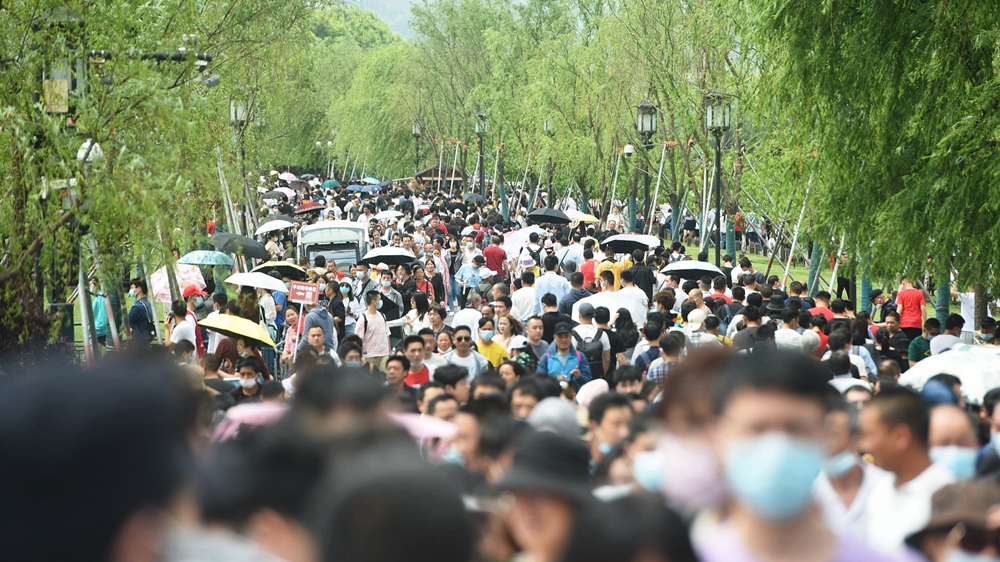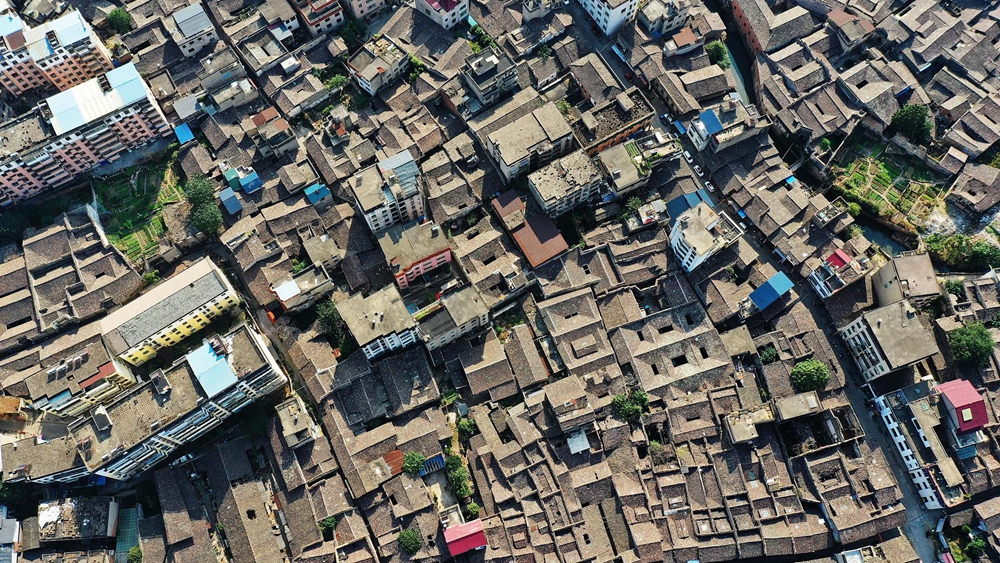
A pregnant woman hangs out with her daughter in Lyuliang City, north China's Shanxi Province, September 8, 2020. /CFP
A pregnant woman hangs out with her daughter in Lyuliang City, north China's Shanxi Province, September 8, 2020. /CFP
The number of Chinese people aged 60 and above reached 264.02 million in 2020, or 18.7 percent of the population, up by 5.44 percentage points from 2010, according to data from the seventh national census released by the National Bureau of Statistics (NBS) on Tuesday.
At the same time, there were 253.38 million people in the age group of 0 to 14 in 2020, or 17.95 percent of the population, up by 1.35 percentage points from 2010, according to the newest census.
Meanwhile, the population on the Chinese mainland stood at 1.41 billion in 2020 after it grew at an annual growth rate of 0.53 percent in the past decade. The population posted a mild growth momentum in the past decade as the annual growth rate ticked down from 0.57 percent in the 2000-2010 period, the 2020 census added.

Tourists visit West Lake scenic area in Hangzhou City, Zhejiang Province, east China, May 1, 2021. /CFP
Tourists visit West Lake scenic area in Hangzhou City, Zhejiang Province, east China, May 1, 2021. /CFP
Changes in household types
The latest census also reflected changes in population with respect to household types, region, gender and others.
As of last year, there were 494.16 million households with 1,292.81 million people and 28.53 million collective households with 118.97 million people, indicating that the average size of a family household was 2.62 people, 0.48 less than the figure of 3.1 in 2010.
This trend could be attributed to increased population mobility and the fact that young people now increasingly tend to live separate from parents after marriage.
More Chinese moving eastward
The census showed that population density increased in economically developed regions and city clusters. In comparison with the 2010 figures, it increased by 2.15 and 0.22 percentage points in eastern and western regions, while the central and northeastern regions witnessed a fall of 0.79 and 1.20 percentage points, respectively.
An improving gender balance
The number of male in China has reached 723.34 million, accounting for 51.24 percent of the whole population, while the female reached 688.44 million, or 48.76 percent.
As for the sex ratio, for every 100 women there were 105.07 men on the Chinese mainland in 2020, down from 111.3 in 2010, showing an improving gender balance.

A bird's eye view of the buildings in Hekou Town, Qianshan County, Jiangxi Province, east China, October 24, 2019. /CFP
A bird's eye view of the buildings in Hekou Town, Qianshan County, Jiangxi Province, east China, October 24, 2019. /CFP
Rising urban population
There were 901.99 million people living in urban areas, accounting for 63.89 percent of the population, and 509.79 million people living in rural areas, making up 36.11 percent.
Compared with 2010, the urban population increased by 236.42 million and the rural population decreased by 164.36 million, with the share of urban population rising by 14.21 percentage points.
Ethnic minority groups growing faster than Han
People from Han ethnic group accounted for 91.1 percent of the total population on the mainland. Compared with the figures from the previous census in 2010, the growth rate of its population is 4.93 percent while the growth rate of the population of people from other ethnic groups is 10.26 percent, according to the results of latest national census.
Besides, the proportion of people from ethnic groups excluding Han in the country's total population has grown 0.4 percentage points compared with the previous census.
China is home to 56 ethnic groups. The steady growth of the population of ethnic groups has fully reflected the comprehensive development and progress of all ethnic groups.

